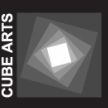
A Study into Two Different Generations of Art
In the year of our lord of 1367, there stood a lonely soldier over the high cliffs watching the sea, watching the time passing by.
On the horizon ships we sailing away for the holy war to protect….., where a man is redeemed of his sin by serving god in the army of crusades.
At sunset, ships sailed away, as their sails disappeared from the horizon, all hopes of peace were fading. Men is evil, they say they ridge war for “A holly cause”………, whist reality is greed; they were for the route of trade and money….. earthy decaying wealth is all what they have been looking for.
During the early 21 century, and with the economical boom witnessed in the Middle East region, we have experienced what I like to call “Consumption economy of Art”; the uneducated-rich became collectors & art patrons served by many so-called artists who have produced/tailored art to fill the walls of the first group while they themselves (the so-called artists) know nothing about art theory, art functionality or even ever read a book about art history. Those who are neither rich nor can produce artifacts became “Curators”. One of the good result of the rescission of 2008 is exposing this breed of people; the recession led those having extra cash to re-think investment away from art and automatically suffocated the fake artists and curators.
By the second decade of this century, the political turmoil that swept old regimes has had its effect both in the structure of the society and the art that is being produced. I don’t believe in “Incident Art” – the art that is produced as a result of an incident – rather the natural flow of art to represent the status of the society or perhaps, if I might say, “documenting the moment of history through art”
The Curatorial Concept
The “Study into two Different Generations of Art” exhibition represent 3 Egyptian artists from 2 different generations; Hani Rashed who experienced as a young child the economical prosperity during the 70’s and early 80’s versus the economical down turn of Egypt starting from the 90’s till today while Ahmed El Shaer and Ramy Dozy who knew only one president from their birth till 3 years ago.
It is a mix of an established artist with another mid-career and an emerging one to establish the link between the two generations. The common link between most of the art works are the usage of icon; Hani Rashid uses the everlasting icon of the faceless to emphasize on the roots the usage of figure in the contemporary art. While El-Shaer, an eye witness of the Egyptian revolution in 2011 and the fall of the regime (he was an active member of the protestors in Tahrir) uses iconography of those political figures as well as famous performance artists of the different generations to represent their effect on the society within the framework of modern technology and presenting them in a way they would have looked in a primitive video game of the 90’s and climaxing with the image of His friend “Ahmad Basioni” who was shot dead by a bullet in his heart during January 2011. Rami Dozy uses billboard that were on T-poles in every street of Cairo representing international brands of the 90’s to date and merge it with folkloric Arabic terms that the commoners use to represent these brands adding his own dreaming perception of what these brands represent; for him the eyes of the cat represent the eyes of one famous Egyptian actress (Noha El Amrousy)
http://www.cube-arts.com/ | 

